Top Tax Mistakes to Avoid with Steven Jarvis
In this blog, I’m excited to bring you a recent conversation I had with Stephen Jarvis, CPA. Stephen is based in Washington State and works with individuals and families—especially retirees—on long-term tax planning. He’s also the host of the Retirement Tax Services Podcast, so he knows his stuff when it comes to taxes and retirement strategy.
In this blog, Stephen shares some of the most common tax mistakes he’s seen recently—and more importantly, how you can avoid making them. Whether you're filing on your own or working with a professional, these insights could save you money, time, and stress.
Meet Stephen Jarvis, CPA
Right off the bat, Stephen gives us a glimpse into his background. He’s been in the tax world for 14 years—an easy number to track, he says, because his daughter was born the same year he started. Over that time, he’s reviewed and worked on thousands of tax returns, giving him a front-row seat to the trends, pitfalls, and blind spots that trip people up.
One key point he emphasizes? Tax planning isn’t just about what happened last year—it’s about what’s coming next.
Myth: “There’s Nothing I Can Do About My Tax Bill”
One of the biggest mistakes Stephen sees is the assumption that taxes are a static, one-and-done process. People think, "It’s April, time to file. Whatever the number is, it is."
But that’s not true.
There are choices you can make to proactively reduce your lifetime tax bill. You’re legally required to pay what you owe—but as Stephen wisely says:
“There are no patriotic awards for leaving a tip to the IRS.”
The Mystery of the Foreign Tax Credit
Here’s a common head-scratcher: the foreign tax credit.
If you’ve got a diversified portfolio with international exposure—often through mutual funds or ETFs—you might see a "foreign tax credit" pop up on your return, even if you’ve never set foot outside the U.S.
Stephen explains this comes from taxes paid to foreign governments through those international holdings. Thankfully, the U.S. offers a credit for those taxes via Form 1116. Still, many clients are confused (and sometimes alarmed) when they see it.
So, if you spot a foreign tax credit and you're not sure where it came from—don’t panic. It’s common, and it usually means your investment portfolio is doing its job.
Rollover Mistakes: 401(k) to IRA
One area where Stephen sees big-dollar mistakes? 401(k) rollovers.
Rolling over a 401(k) to an IRA should be tax-free, if it’s done correctly. But mistakes in paperwork or reporting can turn this into a taxable event—potentially costing you thousands.
“You want that rollover amount to show on Line 5A of your return,” Stephen explains, “but not on Line 5B—that’s the taxable portion.”
And here’s a pro tip: next to the rollover amount, your return should literally say “ROLLOVER.” It looks like it was typed into the margin with an old-school typewriter—but it’s supposed to be there.
If you’re reviewing your return and see a $650,000 distribution and no "ROLLOVER" label... time to double-check with a pro.
Equity Compensation: One Event, Two Tax Forms
Equity compensation can be another landmine, especially for folks working in tech or receiving stock-based bonuses.
The problem? These transactions often show up in two places: your W-2 (from your employer) and a 1099 (from your investment custodian). If you're not careful, both forms can trigger taxes—resulting in you paying twice for the same income.
“Some of the largest tax refunds I’ve filed were to fix this exact mistake,” Stephen says.
So, if you’re receiving restricted stock units (RSUs), non-qualified stock options (NSOs), or similar benefits—this is definitely an area where a CPA can add real value.
When DIY Doesn’t Cut It
While many people can handle a straightforward return on their own, Stephen stresses the importance of knowing your limits.
“There’s a line where you should probably get professional help,” he says. “And for most people, equity compensation is that line.”
The more moving parts you have—multiple incomes, rollovers, investment accounts, charitable donations—the more likely it is you’ll benefit from having a second set of eyes on your return.
QCDs, HSAs, and Planning for the Long Run
We also dove deeper into a couple of areas that can provide big tax benefits—Qualified Charitable Distributions (QCDs) and Health Savings Accounts (HSAs). But, as with anything tax-related, it’s easy to miss key details and lose out on the savings.
Stephen walks us through the most common mistakes people make with these tools, and how to be more intentional with your tax strategy year over year.
What Is a QCD Again?
If you’ve listened to me for a while, you’ve probably heard me mention Qualified Charitable Distributions. But in case you need a refresher, Stephen broke it down clearly:
“A QCD lets you donate directly from your IRA to a qualified charity. You don’t pay tax on that distribution, and it still counts toward your RMD.”
And here’s the key point: you’re not getting a deduction after the fact like you would with a traditional charitable contribution. Instead, that income never even hits your tax return.
It’s a perfect strategy if:
You’re 70½ or older
You want to donate to charity anyway
You don’t itemize your deductions anymore (because of the higher standard deduction)
“From a tax standpoint, donating $1,000 might save you $300. So if you’re already charitably inclined, a QCD just lets you give more efficiently. But spending $1,000 to save $300 only makes sense if the donation was something you wanted to do anyway.”
Stephen joked that if you want to spend $1,000 to get $300 back, he’ll start a side business doing that for you. (Not recommended.)
QCDs Must Come Before RMDs
One of the biggest mistakes Stephen sees with QCDs is people not doing them in the right order.
Say you need to take a $20,000 RMD this year, and you also want to give $2,000 to charity. If you take the full $20,000 first, and only later decide to give to the food bank, it’s too late—the $2,000 counts as a normal donation, not a QCD.
“You can’t take your RMD, write a check from your bank account, and call it a QCD. The donation has to come directly from the IRA.”
So if you want part of your RMD to go to charity, you have to initiate the QCD first—through your IRA custodian.
QCDs and Your Tax Return: Don’t Assume It’s Handled
Even if you do everything right, there’s still a big opportunity for error: your custodian probably won’t report the QCD separately on your 1099-R.
“The IRS hasn’t given custodians a way to label QCDs. So what you get is a 1099-R showing the full distribution amount—and a little checkbox that says ‘taxable amount not determined.’”
That means the responsibility is on you (or your accountant) to report it correctly. On your tax return:
Line 4a will show the full IRA distribution (e.g. $20,000)
Line 4b will show the taxable portion (e.g. $18,000)
And the word “QCD” should be typed in the margin
If you don’t tell your tax preparer about the QCD—or forget to adjust this yourself if you're DIY-ing—your full distribution might get taxed.
Stephen recommends using a “1099 Letter” or year-end tax planning summary to give your accountant the right info. Even a simple spreadsheet can help avoid costly oversights.
HSAs: A Triple Tax Benefit (With Some Pitfalls)
If you’ve followed me for any length of time, you know how much I love Health Savings Accounts (HSAs). Stephen’s a fan too—but he’s seen a few common mistakes.
Mistake #1: Double-reporting contributions
If you contribute to your HSA through payroll, it’s already on your W-2. But on your tax return—specifically Form 8889—there’s a spot for reporting HSA contributions. And it’s easy to get confused.
“The form asks for ‘employee contributions,’ but what it really means is payroll deductions. If you report the same contribution again, the IRS thinks you overfunded your HSA and will penalize you.”
So be sure to only report contributions made outside of payroll on your tax return.
Mistake #2: Using your HSA like a checking account
A lot of people are introduced to HSAs through HR, and it's often explained like a use-it-or-lose-it account. But unlike FSAs, your HSA balance rolls over forever—and that’s where the real power lies.
“If you can afford to pay medical expenses out of pocket now, let your HSA grow tax-free. You’ll get the deduction today, tax-free growth over time, and tax-free withdrawals later.”
It’s like a supercharged retirement account for healthcare.
And here’s the kicker—you can reimburse yourself years later for any eligible expenses, as long as they happened after your HSA was opened.
So keep your receipts, track them in a spreadsheet, and you could one day take a $15,000 tax-free withdrawal for that family vacation—just by reimbursing yourself for old medical bills.
What Happens If You’re Audited?
Some people worry about getting audited if they reimburse themselves for expenses from years ago. But Stephen reassured us:
“This is a well-established part of the tax code. If you keep the receipts and the expenses were legitimate, you’re on solid ground.”
That said, don’t try to stretch the rules. No, your emotional support alpaca doesn’t count as a medical expense.
Stick to actual qualified healthcare costs, keep good records, and this is one of the cleanest strategies out there.
Final Takeaways from Stephen
A reminder from Stephen:
“There are no awards for overpaying the IRS. Pay what you owe, but not a penny more. And the only tax planning that counts is the kind you actually report.”
He’s right. It’s not just about getting a refund—it’s about looking ahead, being intentional, and managing your tax bill over time.
That means having a multi-year strategy, especially if you’re nearing retirement. Know what your income will look like over the next 3–5 years. Understand how your distributions, Social Security, and capital gains will interact—and plan accordingly.
If you have a question or topic that you’d like to have considered for a future episode/blog post, you can request it by going to www.retirewithryan.com and clicking on ask a question.
As always, have a great day, a better week, and I look forward to talking with you on the next blog post, podcast, YouTube video, or wherever we have the pleasure of connecting!
Written by Ryan Morrissey
Founder & CEO of Morrissey Wealth Management
Host of the Retire with Ryan Podcast





